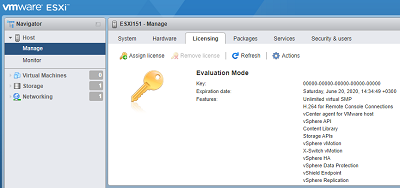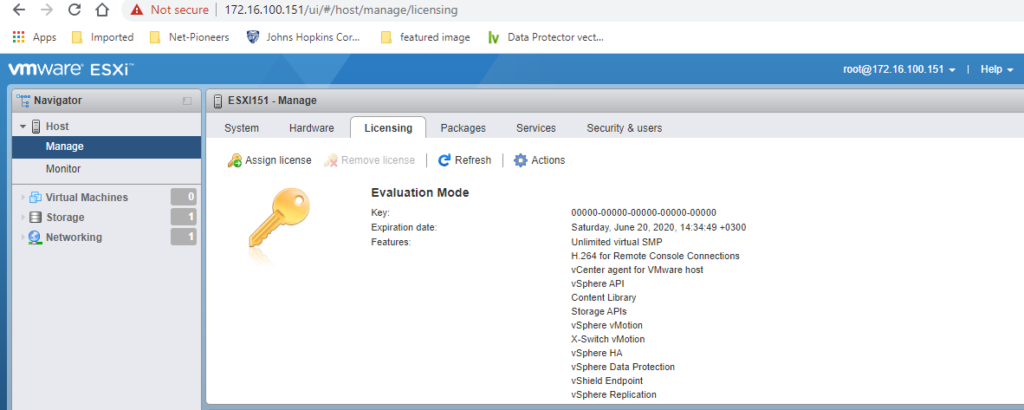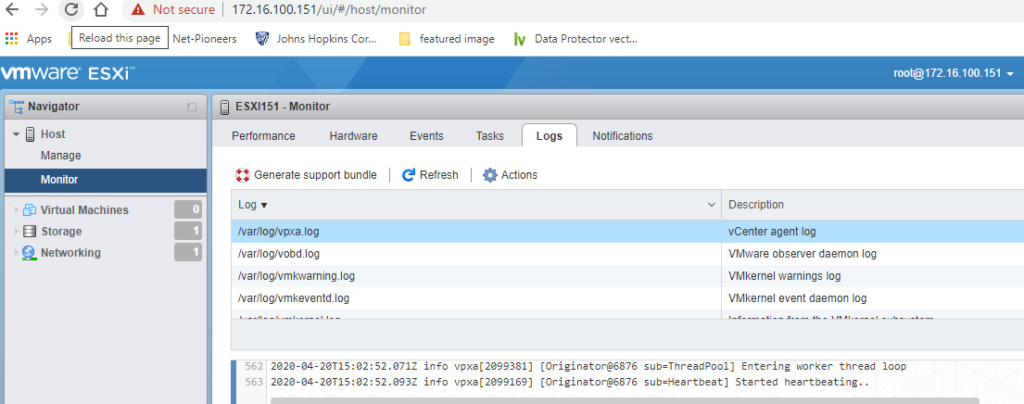After Install and Set Up ESXi
After ESXi is installed and set up, you can manage the host by using the vSphere Web Client and vCenter Server, license the host, and back up your ESXi configuration.
You can also use the VMware Host Client to connect directly to the ESXi host and to manage it
post ESXI installation include tasks :
- Licensing ESXi Hosts
- View System Logs
- enable quick boot
Licensing ESXi Hosts
After you install ESXi, it has a 60-day evaluation period during which you can explore the full set of vSphere features provided with a vSphere Enterprise Plus license.
The evaluation mode provides the set of features equal to a vSphere Enterprise Plus license. Before the evaluation mode expires, you must assign to your hosts a license that supports all the features in us
You must assign the host an appropriate license before the evaluation period expires.
ESXi hosts are licensed with vSphere licenses that have per-CPU capacity.
To license hosts correctly, you must assign them a vSphere license that has enough CPU capacity to cover all CPUs in the hosts.
The license must support all features that the hosts are using.
For example, if the hosts are connected to a vSphere Distributed Switch, you must assign a license that has the vSphere Distributed Switch feature.
You can use one of following methods to license ESXi hosts:
- License multiple hosts at a time by using the license management function in the vSphere Web Client. The hosts must be connected to a vCenter Server system. For more information, see vCenter Server and Host Management.
- Set up bulk licensing by using PowerCLI commands. Bulk licensing works for all ESXi hosts, but is especially useful for hosts provisioned with Auto Deploy.
- License individual ESXi hosts by using a direct connection with the VMware Host Client.
vew system log
System logs provide detailed information about system operational events.
open https://ESXI151 > monitor > system log
Press a corresponding number key to view a log.
- vCenter Server Agent (vpxa) logs appear if you add the host to vCenter Server.
- Press Enter or the spacebar to scroll through the messages.
- Perform a regular expression search.
- Press the slash key (/).
- Type the text to find.
- Press Enter.
- The found text is highlighted on the screen.
- Press q to return to the direct console.
Host Quick Boot
- VSphere Quick Boot is an innovation in conjunction with major server vendors that restarts the VMware ESXi™ hypervisor without rebooting the physical host, skipping time-consuming hardware initialization.
- When you reboot earlier version of ESXi hosts, it involves a full power cycle that requires firmware and device initialization.
- Quick Boot optimizes the reboot path to avoid this, saving considerable time from the upgrade process.
- There is a cons that NOT ALL servers do support and compatible for quick boot option.
- You need to check compatibility before you enable this feature.
- Here is a command you can use to check if your system is compatibility for ESXi Quick boot. Run this command on the ESXi host from putty.
/usr/lib/vmware/loadesx/bin/loadESXCheckCompat.py




